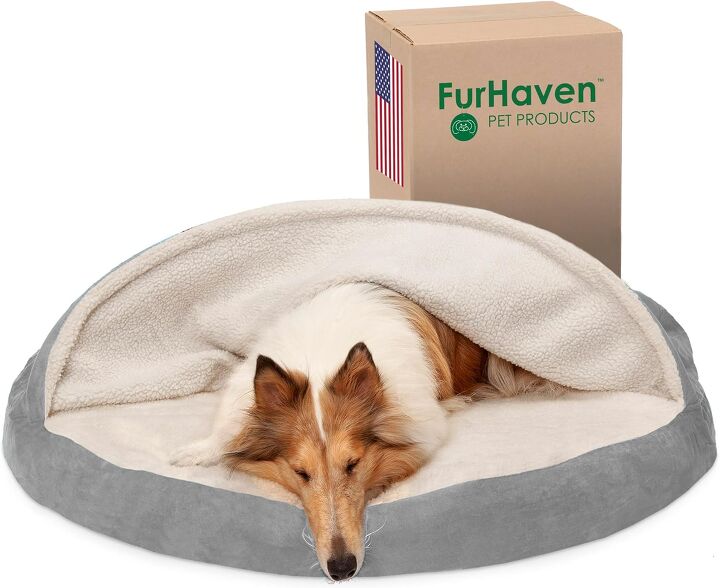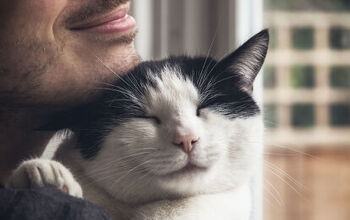How Do I Manage My Dog's Separation Anxiety When I'm At Work?

No one likes to be separated from their cherished pet for too long. But going to work is unavoidable for most of us, and, inevitably, our pets have to stay home alone. It might not seem like a big deal to you, knowing you’ll be back after a few hours, but it is definitely a big deal for your dog. In fact, most pet dogs are affected by this separation so much that they can experience anxiety and stress, ranging from mild discomfort to severe panic. Needless to say, this is traumatic for your pet (and can result in destroyed valuables, too) so it’s important to learn how to help them manage anxiety when you’re away. Here are some tips to help you navigate your pet’s separation anxiety while you’re at the office.
6 Ways To Prevent Dog Separation Anxiety When You’re At Work
Going off to work and leaving their pet behind is a challenge for many pet owners around the world, especially those who live alone. When you're at the office, you need to make sure your pet is safe and taken care of until you come back. But even when you organize everything, your pet might feel stressed out on their own - even when it’s for a few hours, your dog won’t know why you left or even if you are coming back which can be a trigger for a panic attack for some canines. Some, especially velcro dogs, get so nervous and stressed that they develop a separation anxiety disorder. But even so, there are many ways to help your pet cope when you're at work, regardless of the severity of their anxiety – here are 6 ways to reduce stress for your four-legged bestie.
- Create a Consistent Routine:
Dogs thrive when they have a routine. Establish a consistent daily schedule for feeding, walks, and playtime. This helps them know what to expect and when. You can create their schedule around your work hours, so your pet will not find it odd that you are not there when they know what to expect before and after your shift (e.g. walk and mealtime).
- Gradual Departures and Arrivals:
Don't make a big fuss when leaving or returning home. Keep your arrivals and departures low-key to reduce anxiety. This helps normalize the process. Make it seem like you just popped out for a few minutes. If you help your dog understand it is not a big deal, they might pick up on your relaxed energy and stay calm when you depart.
- Offer Interactive Toys:
Provide toys that can keep your dog entertained while you're away. Puzzle toys or treat-dispensing toys can be a great way to distract your pooch. They can keep a curious doggo occupied for hours, making time fly and your return come faster.
- Leave Your Scent Behind:
Dogs experience the world through their noses – leave an item with your scent, like a worn piece of clothing, so your pooch can feel your presence even when you're not around. This can provide comfort in your absence. Don’t be surprised to see your dog snuggling in your old sweater. This is a big deal to them.
- Create a Safe Space:
Make sure you have a comfortable and safe space for your dog to retreat to when they’re alone in the house. This could be a cozy bed or a crate if your dog feels secure in it. Such nooks provide comfort, safety, and warmth, all of which are essential for a dog to feel protected and at home.
- Consider Doggie Daycare or a Pet Sitter:
If you really can’t live with the idea of your pet being all alone, then enlist the help of a friend, neighbor, or professional pet sitter to spend time with your dog during the day. Most cities have thriving pet daycares, where they will look after your dog until you are ready to pick them up, so if you have a social dog, this might be an even better option for them,
If your dog really can’t stand the idea of being alone, and their anxiety becomes severe, then consult with a professional dog trainer or a veterinarian behaviorist. They can provide personalized advice and training. Remember, patience is key to getting your dog used to your absence. It might take time for your dog to adjust, so be consistent and understanding as you work through this together.

A proud mama to seven dogs and ten cats, Angela spends her days writing for her fellow pet parents and pampering her furballs, all of whom are rescues. When she's not gushing over her adorable cats or playing with her dogs, she can be found curled up with a good fantasy book.
More by Angela Vuckovic

























